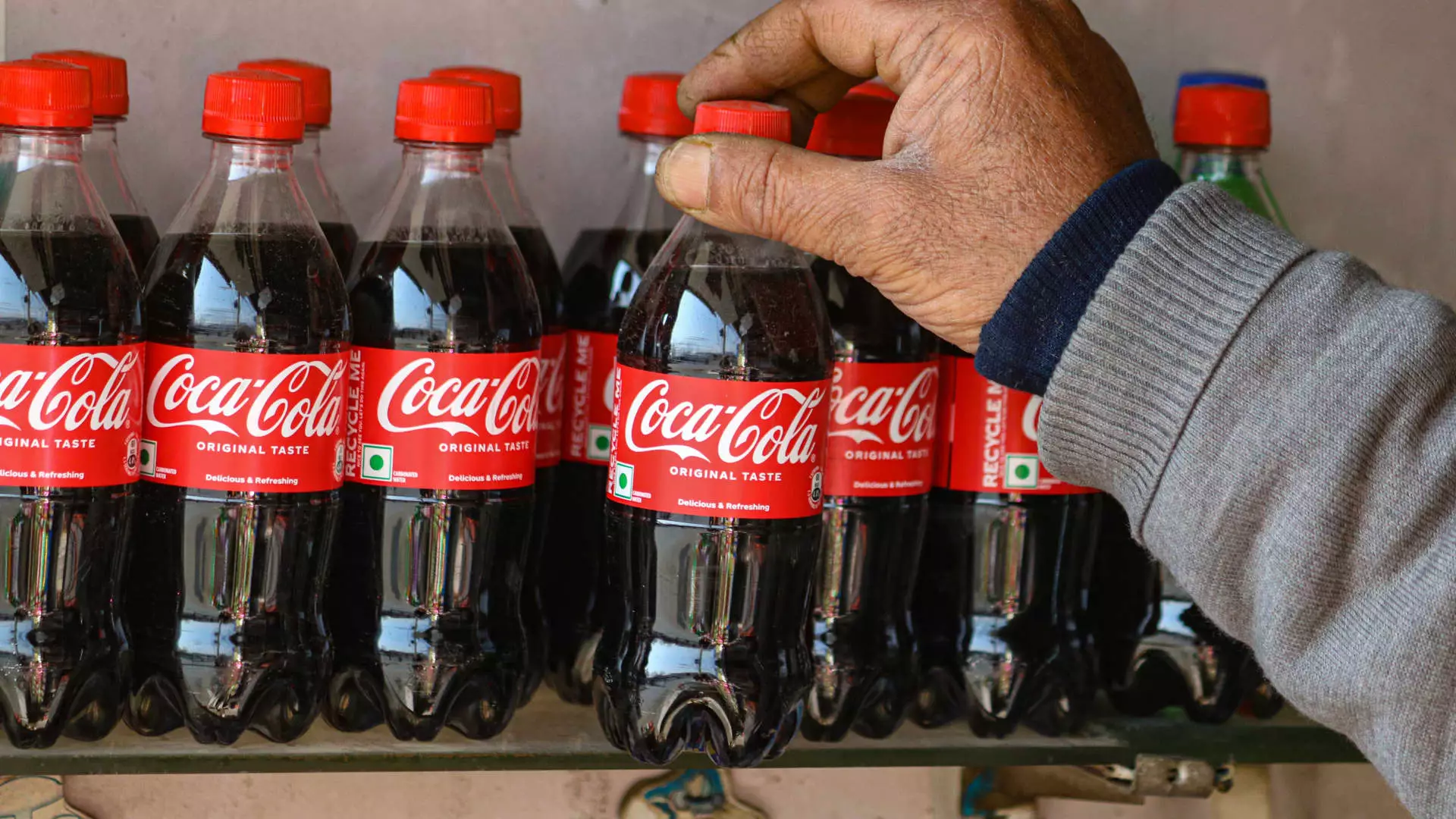In a landscape punctuated by economic shifts and environmental scrutiny, Coca-Cola is now pivoting towards alternative packaging solutions, namely from aluminum to plastic bottles. This strategic maneuvering, prompted by the newly introduced tariffs on aluminum imports by the Trump administration, raises significant questions about consumer pricing, environmental responsibilities, and the company’s future direction in packaging innovation. As CEO James Quincey articulates in company communications, these tariff policies force businesses to reconsider their packaging strategies to maintain competitiveness in an unpredictable market.
The recent imposition of a 25% tariff on aluminum imports presents both challenges and opportunities for Coca-Cola. “If one package suffers some increase in input costs, we continue to have other packaging offerings that will allow us to compete in the affordability space,” stated Quincey during an earnings call. Essentially, while aluminum costs are projected to rise, Coca-Cola is prepared to expand its use of PET, or polyethylene terephthalate, plastic bottles. This dynamic illustrates the company’s agility in the face of regulatory changes, adapting its offerings to preserve profit margins while meeting consumer demand.
Despite Quincey’s initial downplaying of the financial ramifications of these tariffs, claiming it will not drastically impact the overall cost structure of the business, the reality remains that significant price fluctuations in raw materials can perturb market dynamics. While aluminum is favored due to its recyclability and established presence in the beverage industry, the switch to plastic may bridge the cost gap that arises from increased tariffs. Furthermore, Coca-Cola’s admission that its procurement of aluminum extends to Canada indicates its vulnerability to fluctuating international trade agreements.
Nevertheless, this shift towards enhanced plastic usage ignites controversial discussions about environmental consequences. Coca-Cola has faced substantial criticism for its environmental performance, notably being labeled as the world’s worst polluter by Greenpeace for six consecutive years. The transition towards plastic bottles, historically associated with higher pollution levels, conflicts with Coca-Cola’s sustainability initiatives, raising a serious dichotomy between economic strategy and ecological responsibility.
Though Coca-Cola asserts its commitment to increasing its percentage of recycled materials—now aiming for 35% to 40% by 2035, a decrease from the previous target of 50% by 2030—the move towards plastic raises skepticism. PET, while lightweight and efficient, boasts a significantly lower recycling rate (29.1%) compared to aluminum cans (50.4%). Critics argue that focusing on plastic over aluminum compromises the company’s credibility in sustainability, possibly alienating environmentally-conscious consumers, as it appears to prioritize short-term financial relief over long-term ecological stewardship.
To navigate the pressures imposed by tariffs, Coca-Cola is exploring several strategies beyond merely switching packaging materials. The company is looking into sourcing aluminum domestically to mitigate costs, alongside potential price adjustments for consumers. Such a dual-pronged strategy allows Coca-Cola to maintain its profitability while also potentially safeguarding its market share.
However, these strategies are not without their challenges. The current landscape of consumer sentiment reflects a growing demand for sustainable practices. Hence, while the pressure to remain competitive exists, Coca-Cola must tread carefully: there is a risk that shifting too heavily to plastic could backfire, potentially leading to loss of customer loyalty if environmentally conscious buyers feel abandoned.
Coca-Cola finds itself at a crossroads—balancing the need to remain economically viable amid changing tariffs with the equally pressing need to uphold its commitment to environmental sustainability. Quincey’s statements suggest a tactical approach that prioritizes immediate profitability, but the company’s long-term viability will hinge on its ability to integrate sustainability into its core operations effectively. As consumer values evolve, Coca-Cola must ensure that its strategies move beyond mere responses to tariffs and embrace a holistic approach that aligns with environmental accountability—this, ultimately, may define the company’s legacy in an increasingly eco-conscious world.

